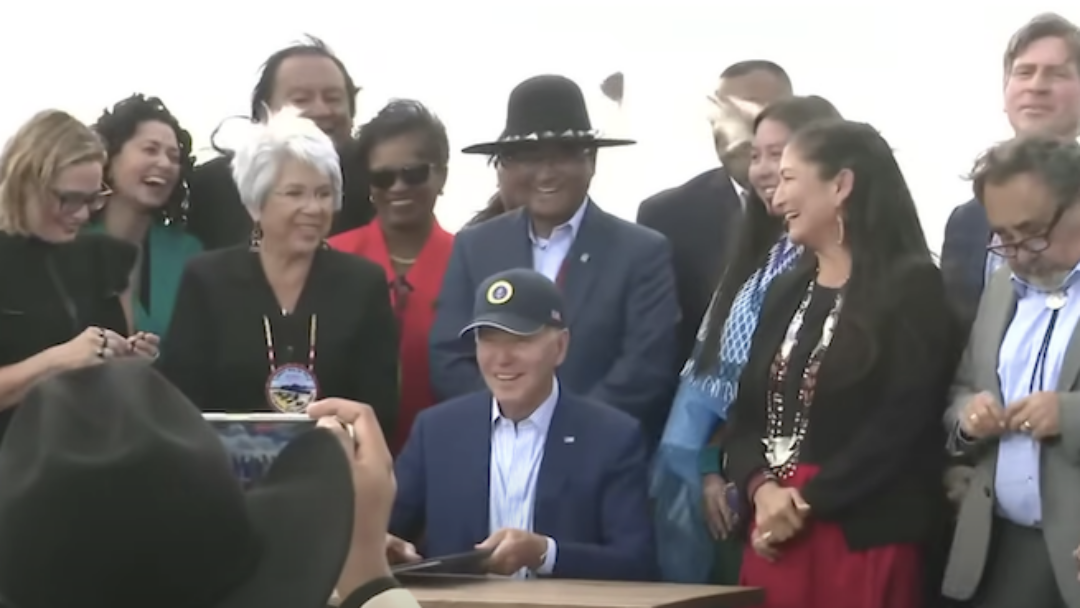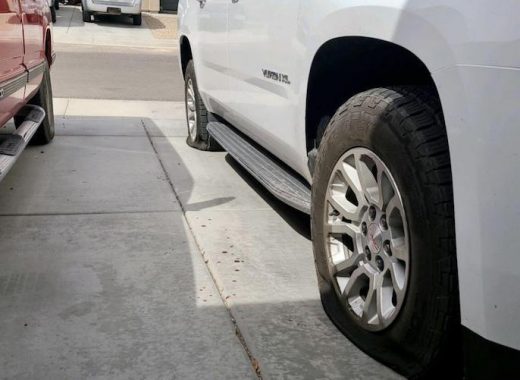On Tuesday, President Biden Signed a proclamation establishing the Baaj Nwaavjo I’tah Kukveni – Ancestral Footprints of the Grand Canyon National Monument in Arizona. Baaj nwaavjo (BAAHJ – NUH-WAAHV-JOH) means “where Indigenous peoples roam” in the Havasupai language, and i’tah kukveni (EE-TAH – KOOK-VENNY) means “our ancestral footprints” in the Hopi language. The name reflects the significance of the Grand Canyon area, not just to one, but to many Tribal Nations.
This designation, which marks the fifth new national monument established by President Biden, honors Tribal Nations and Indigenous peoples by protecting sacred ancestral places and their historically and scientifically important features, while conserving our public lands, protecting wildlife habitat and clean water, and supporting local economies.
Baaj Nwaavjo I’tah Kukveni – Ancestral Footprints of the Grand Canyon National Monument will conserve nearly 1 million acres of public lands surrounding Grand Canyon National Park. The new monument protects thousands of cultural and sacred sites that are precious to Tribal Nations in the Southwest – including the Havasupai Tribe, Hopi Tribe, Hualapai Tribe, Kaibab Band of Paiute Indians, Las Vegas Paiute Tribe, Moapa Band of Paiutes, Paiute Indian Tribe of Utah, Navajo Nation, San Juan Southern Paiute Tribe, Yavapai-Apache Nation, Pueblo of Zuni, and the Colorado River Indian Tribes. These sites include Gray Mountain, called Dziłbeeh by the Navajo, which is a part of Navajo ceremonial songs, stories, and rituals. The President will sign the proclamation at Red Butte, a sacred site called Wii’i Gdwiisa by the Havasupai, which towers above the southern portion of the monument.
In conjunction with the President’s visit to Arizona, and ahead of the 1-year anniversary of the Inflation Reduction Act, the Biden-Harris Administration is also announcing $44 million to strengthen climate resilience across America’s iconic National Parks system, including 43 projects across 39 states, Washington, D.C., Puerto Rico, and the U.S. Virgin Islands.
Biden’s designation supports Tribally led conservation efforts and helps address injustices of the past, including when Tribes were forcibly removed from lands that later became Grand Canyon National Park.
The new Baaj Nwaavjo I’tah Kukveni – Ancestral Footprints of the Grand Canyon National Monument joins other iconic places protected by the Biden-Harris Administration, including Avi Kwa Ame National Monument in Nevada, Castner Range National Monument in Texas, Camp Hale-Continental Divide National Monument in Colorado, Bristol Bay and the Tongass National Forest in Alaska, and the Boundary Waters Canoe Area Wilderness and surrounding watershed in Minnesota.
The Baaj Nwaavjo I’tah Kukveni – Ancestral Footprints of the Grand Canyon National Monument protects and preserves the rich cultural, ecological, scientific, historic, and scenic value of the greater Grand Canyon landscape. The monument designation protects these sacred places for cultural and spiritual uses, while respecting existing livestock grazing permits and preserving access for hunting and fishing.
The new monument is made up of three distinct areas to the south, northeast, and northwest of Grand Canyon National Park. It is bordered by the Kanab watershed boundary and Kanab Creek drainage in the northwestern area and the Havasupai Indian Reservation and Navajo Nation in the southern area, and stretches from Marble Canyon to the edge of the Kaibab Plateau in the northeastern area. The monument spans 917,618 acres of public lands managed by the Interior Department’s Bureau of Land Management and the Department of Agriculture’s U.S. Forest Service.
The area includes many natural wonders, from sweeping plateaus and deep canyons to meandering creeks and streams that ultimately flow into the mighty Colorado River, providing water to millions of people across the Southwest. The unique interplay of geology and hydrology support some of the most biodiverse habitats in the region ranging from sagebrush to savanna, providing refuge for iconic wildlife including bighorn sheep, mule deer, bison, peregrine falcons, bald eagles, owls, and songbirds. The new monument contains over 3,000 known cultural and historic sites, including 12 properties listed on the National Register of Historic Places.
The proclamation continues the Biden-Harris Administration’s engagement with Tribal Nations around traditional homelands and sacred sites. It directs the Department of the Interior and Department of Agriculture to engage with Tribes through consultations, co-stewardship agreements, contracts, financial and technical assistance, and other mechanisms to ensure that that the management of the monument occurs in collaboration with Tribes and reflects the Indigenous Knowledge and special expertise Tribes have amassed over countless generations. The proclamation also establishes the Baaj Nwaavjo I’tah Kukveni – Ancestral Footprints of the Grand Canyon Commission to advance the objective of co-stewardship of the monument.
Today’s designation preserves this vital landscape for outdoor recreation, including camping, hiking, biking, and other recreational activities, consistent with applicable law. Hunting and fishing will continue to be allowed throughout the monument, including in the Kanab Creek area.
The proclamation recognizes and reaffirms the State of Arizona’s ongoing primary role in the management of wildlife within the monument and directs federal agencies to build on their ongoing partnerships with the Arizona Game and Fish Department to further strengthen these collaborative efforts. Hunting, fishing, live trapping and transplantation, activities associated with scientific resources management including research, census, and monitoring of populations, and a wide range of other wildlife management activities will continue to be allowed within the national monument. The proclamation further directs the Department of the Interior and the Department of Agriculture to build on their ongoing partnerships with the Arizona Game and Fish Department to explore developing new or updating existing memoranda of understanding to further improve these collaborative efforts.
The national monument only includes federal lands and does not include State and private lands within the boundary or affect the property rights of the State or private land owners.








